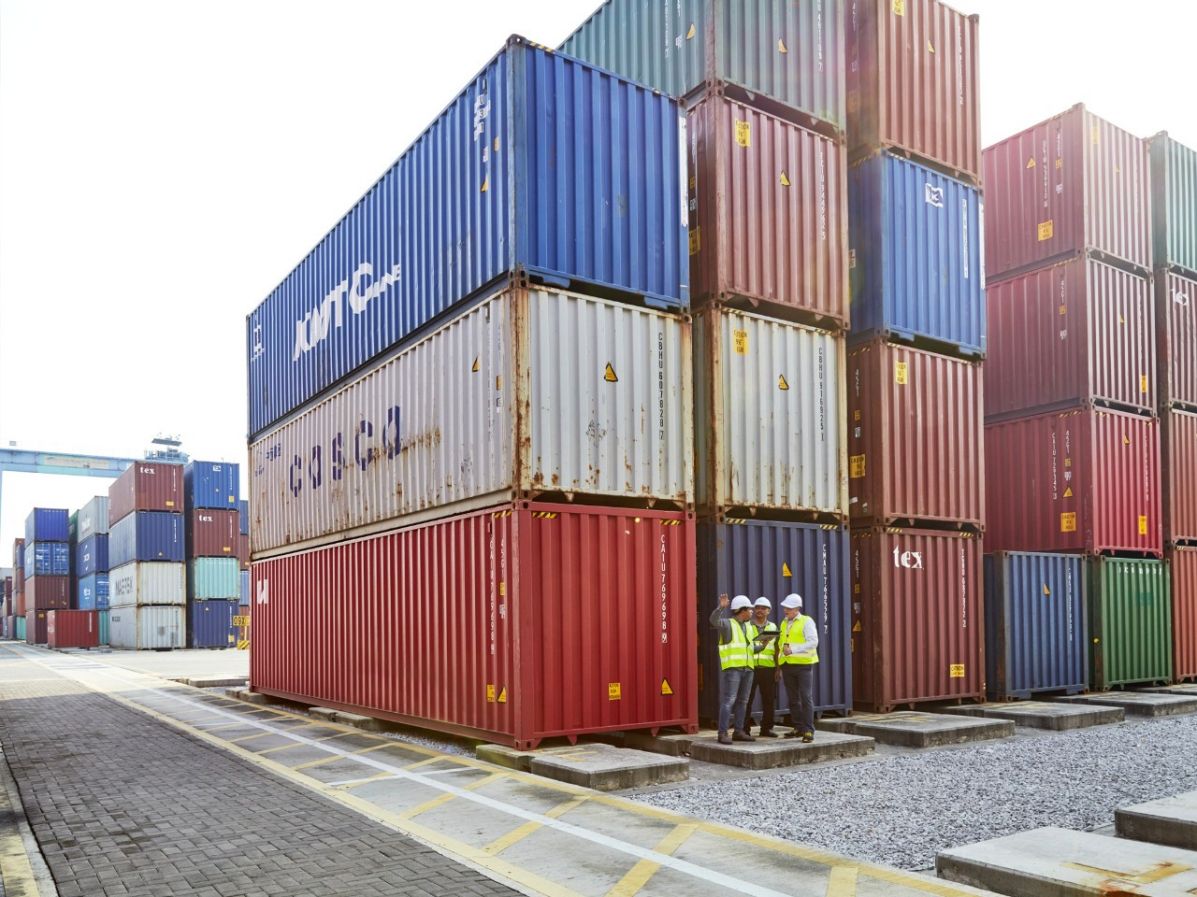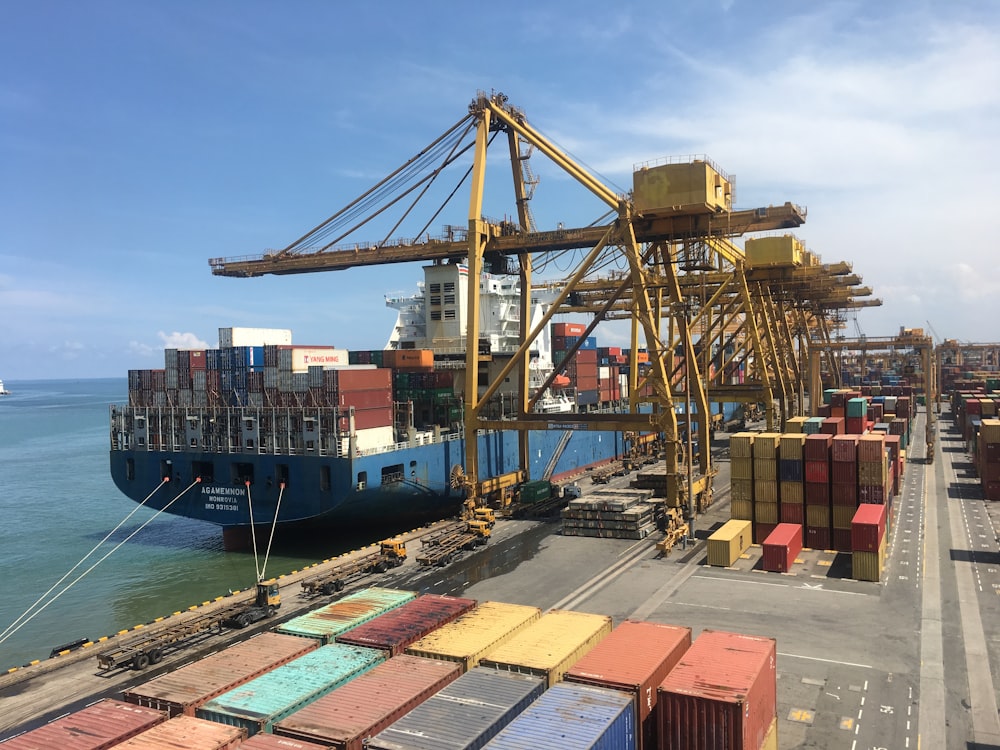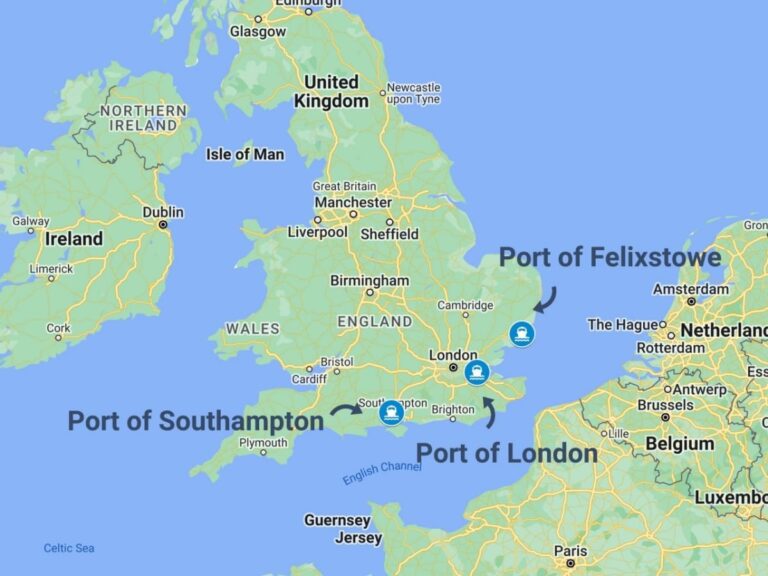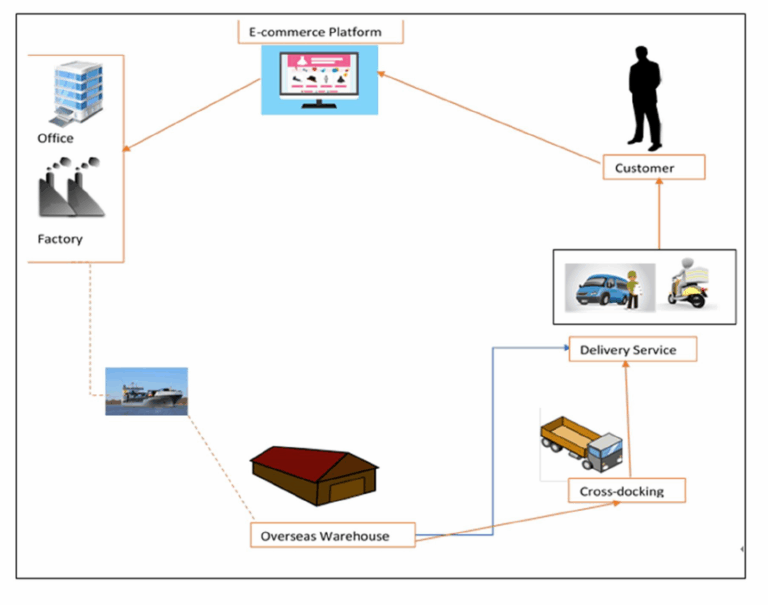The Definitive Guide to Shipping From College To Home: Rates, Trans…
Your Complete Guide to shipping from college to home
Navigating the Complexities of Shipping from College to Home
Shipping personal belongings from college back home can be an overwhelming task, especially for international shippers, importers, exporters, and business owners. The challenges are manifold: from understanding the myriad shipping methods available to accurately estimating costs, managing transit times, and navigating customs regulations. For students and their families, the stress can escalate as they face tight deadlines and the risk of damaged or lost items during transit.
As a business owner in the logistics and shipping sector, you are likely aware of the significant role that efficient shipping plays in enhancing customer satisfaction. When it comes to college students, the stakes are even higher. Families expect their loved ones’ belongings to arrive safely and on time, creating a demand for reliable shipping solutions that can cater to a diverse range of needs.
This comprehensive guide will delve into the essential aspects of shipping from college to home, ensuring you are well-equipped to handle the logistics involved. You will learn about various shipping methods, including ground, air, and freight options, allowing you to choose the most suitable solution based on urgency and budget. We will also explore the costs associated with these methods, helping you identify the most economical choices without compromising on service quality.
Transit times are another critical factor to consider. Understanding how long each shipping method will take will enable you to better manage expectations and plan accordingly. Additionally, we will discuss the intricacies of customs regulations, particularly for international shipments, which can often complicate the process. Knowing the necessary documentation and compliance requirements can save you time, money, and frustration.
Lastly, we will address the potential risks involved in shipping personal items, such as loss or damage, and provide expert tips on how to mitigate these risks effectively.

By the end of this guide, you will possess the expert knowledge needed to navigate the shipping process from college to home efficiently. With the right strategies and insights, you can transform a potentially stressful experience into a smooth and successful transition, ensuring students return home with their belongings intact and on time.
Table of Contents
- Your Complete Guide to shipping from college to home
- Understanding Your Shipping Options: A Detailed Comparison
- Deconstructing the Cost: A Full Pricing Breakdown
- Transit Time Analysis: How Long Will It Take?
- Navigating Customs Clearance: A Step-by-Step Guide
- A Practical Guide to Choosing Your Freight Forwarder
- Incoterms 2020 Explained for Shippers
- Risk Management: Identifying and Mitigating Common Shipping Problems
- Frequently Asked Questions (FAQs) for shipping from college to home
- Conclusion: Key Takeaways for Successful Shipping
- Important Disclaimer
Understanding Your Shipping Options: A Detailed Comparison
Overview of Shipping Methods for College Students
When it comes to shipping belongings from college back home, understanding your options is crucial. Each shipping method offers unique advantages and disadvantages depending on the size of the shipment, the urgency of delivery, and your budget. Below is a detailed comparison of various transportation methods suitable for students shipping items home after a semester.
Comparison Table
| Shipping Method | Best For | Speed | Cost Level | Key Advantages | Key Disadvantages |
|---|---|---|---|---|---|
| Sea FCL | Large shipments | 2-6 weeks | Low | Cost-effective for bulk; environmentally friendly | Longer transit times; requires port access |
| Sea LCL | Smaller shipments | 3-8 weeks | Moderate | Flexible for small loads; only pay for space used | Longer transit; potential for delays |
| Air | Urgent or valuable items | 1-5 days | High | Fast delivery; global reach | Expensive; weight limits may apply |
| Rail | Heavy or oversized items | 1-3 weeks | Moderate | Economical for large freight; reliable | Limited routes; slower than air |
| Express | Time-sensitive packages | 1-3 days | Very High | Fastest option; door-to-door service | High cost; weight restrictions |
Detailed Breakdown of Each Method
Sea Freight (FCL and LCL)
What It Is:
Sea freight is a common method for transporting goods internationally. FCL (Full Container Load) means you rent an entire container, while LCL (Less than Container Load) allows you to share container space with others.
When to Use:
Use sea freight for larger shipments or when you have time to spare. FCL is ideal for bulk items, while LCL is suitable for smaller shipments that do not fill an entire container.
Pros:
– Cost-Effective: Lower shipping rates for larger quantities.
– Eco-Friendly: Less carbon footprint compared to air freight.
– Capacity: Can handle oversized or heavy items.
Cons:
– Long Transit Times: Delivery can take weeks.
– Port Accessibility: Requires access to a shipping port, which may not be convenient for everyone.
Air Freight
What It Is:
Air freight is the transport of goods via air, typically using cargo planes.
When to Use:
This method is ideal for urgent shipments, valuable items, or when shipping to remote locations with limited transport options.

Pros:
– Speed: Fast delivery times, often within a few days.
– Global Reach: Can reach international destinations quickly.
– Reliability: Less chance of damage due to quicker transit.
Cons:
– High Cost: Significantly more expensive than sea freight.
– Weight Restrictions: Limited by weight and size, which can increase costs.
Rail Freight
What It Is:
Rail freight involves transporting goods via train. It’s commonly used for domestic shipments.
When to Use:
Best for heavy, oversized items that are not time-sensitive.
Pros:
– Economical: Generally cheaper than road transport for large volumes.
– Reliable: Trains are less affected by traffic and weather conditions.

Cons:
– Limited Routes: Not as flexible as road transport; limited to existing rail lines.
– Longer Delivery Times: Slower than air freight.
Express Shipping
What It Is:
Express shipping is a premium service offered by carriers for urgent deliveries.
When to Use:
Ideal for last-minute shipments, important documents, or items that need to arrive quickly.
Pros:
– Fastest Delivery: Typically guarantees arrival within 1-3 days.
– Door-to-Door Service: Convenient for students shipping directly to home.
Cons:
– Very High Cost: Expensive compared to other methods.
– Weight Limits: Often has strict weight and size restrictions.
Special Considerations
Multimodal Transport
Multimodal transport combines different modes of transportation (e.g., rail and sea) to optimize shipping efficiency. This method can be particularly beneficial for students shipping items from overseas. By using multiple transport modes, you can reduce costs and transit times while accommodating the logistics of international shipping.
Pros:
– Flexibility: Allows for tailored shipping solutions based on specific needs.
– Cost-Effectiveness: Can be cheaper than using a single mode for the entire journey.

Cons:
– Complex Coordination: Requires careful planning and communication between different carriers.
– Potential for Delays: Each mode of transport can introduce its own delays.
Specialized Options (RoRo, Break Bulk)
RoRo (Roll-on/Roll-off):
This method involves driving vehicles onto a ship for transport. It’s often used for cars, motorcycles, or large equipment.
Pros:
– Efficient Loading/Unloading: Quick and straightforward process.
– Cost-Effective for Vehicles: Cheaper than container shipping for vehicles.
Cons:
– Limited Cargo Types: Only suitable for wheeled vehicles.
– Potential for Damage: Vehicles may be exposed to the elements during transit.
Break Bulk:
This method is used for cargo that cannot fit into standard containers. Items are loaded individually.
Pros:
– Versatile for Odd-Shaped Cargo: Ideal for large or uniquely shaped items.
– Direct Access: Easier to access cargo without unloading entire containers.
Cons:
– Higher Handling Costs: More labor-intensive, which can increase costs.
– Risk of Damage: More handling increases the risk of damage during transit.

Conclusion
Choosing the right shipping method for transporting items from college to home involves careful consideration of various factors, including speed, cost, and the nature of the items being shipped. By understanding the pros and cons of each shipping option, students and their families can make informed decisions that best suit their needs. Whether opting for cost-effective sea freight or the speed of air shipping, ensuring a smooth transition from college to home is achievable with the right logistics strategy.
Deconstructing the Cost: A Full Pricing Breakdown
Understanding the Costs of Shipping from College to Home
Shipping belongings from college back home can often be a daunting task, especially when considering the various costs involved. Understanding these costs can help students and their families budget appropriately and avoid unexpected expenses. Below, we break down the primary cost components, analyze factors influencing prices, and provide a sample pricing table along with strategies to reduce shipping costs.
Main Cost Components
When shipping items from college to home, there are three main cost components that you should be aware of:
- Main Freight
- Origin Charges
- Destination Charges
Each of these components plays a significant role in the overall shipping costs and can vary based on several factors, such as the shipping method, weight, volume, and distance.
Main Freight
Main freight refers to the core transportation costs associated with moving goods from the origin to the destination. This cost can vary significantly depending on the mode of transport chosen—air or sea freight.
- Air Freight: Generally faster but more expensive. Costs are calculated based on weight (per kg) and can fluctuate based on fuel prices and demand.
- Sea Freight: More economical for larger shipments but takes longer. Costs can be based on container size (e.g., 20ft or 40ft) or LCL (Less than Container Load) rates.
Factors Influencing Main Freight Costs:
- Distance: Longer distances typically increase shipping costs.
- Weight and Volume: Heavier and bulkier items cost more to ship. Shipping costs may also be calculated based on volumetric weight, which considers the space a package occupies.
- Seasonality: Peak seasons (e.g., back-to-school) can drive up costs due to increased demand.
Origin Charges
Origin charges are fees incurred before the shipment leaves the point of origin. These charges can include:
- Packaging Fees: Costs associated with packing materials and labor.
- Pick-up Fees: Charges for arranging the collection of items from the college dorm or apartment.
- Loading Fees: Costs for loading items onto the transport vehicle or container.
Factors Influencing Origin Charges:
- Type of Service: Different shipping companies may have varied pricing structures for packing and pick-up.
- Location: Remote areas may incur higher pick-up fees.
- Item Type: Fragile or specialty items may require additional handling, increasing costs.
Destination Charges
Destination charges are fees incurred upon arrival at the destination. These can include:

- Unloading Fees: Costs for unloading items from the transport vehicle or container.
- Customs Duties: Applicable for international shipments, these fees are based on the value and nature of the goods.
- Delivery Fees: Charges for transporting items from the port or airport to the final destination.
Factors Influencing Destination Charges:
- Customs Regulations: Different countries have varying customs duties, which can significantly impact costs.
- Delivery Distance: Longer distances from the delivery hub to the final address can increase delivery fees.
- Handling Requirements: Specialty items may require additional handling upon delivery, raising costs.
Example Pricing Table
Below is a sample pricing table for shipping options from China to the USA. Please note that these prices are estimates and can vary based on several factors.
| Shipping Method | Container Size | Estimated Cost (USD) |
|---|---|---|
| Sea Freight | 20ft | $1,200 – $2,500 |
| Sea Freight | 40ft | $2,500 – $4,500 |
| Sea Freight (LCL) | 1 CBM | $150 – $300 |
| Air Freight | Per kg | $5 – $10 |
Disclaimer: The prices above are estimates and can vary based on current market conditions, additional fees, and specific shipping requirements.
How to Reduce Costs
Reducing shipping costs can be particularly beneficial for students and families looking to manage their budgets effectively. Here are some actionable tips:
-
Plan Ahead: Schedule shipments in advance to avoid peak pricing during busy seasons like the start or end of the school year.
-
Consolidate Shipments: Combine items into fewer packages to take advantage of bulk shipping rates. Consider sharing shipping with friends to reduce costs further.
-
Choose the Right Shipping Method: Evaluate whether air or sea freight makes more sense based on urgency and budget. Sea freight is typically cheaper for larger shipments.
-
Use Flat-Rate Shipping Options: Some carriers offer flat-rate shipping boxes which can be cost-effective for heavier items.
-
Compare Shipping Providers: Obtain quotes from multiple shipping companies to find the best rates and services. Look for discounts or student-specific offers.
-
Optimize Packing: Use appropriate-sized boxes and packing materials to minimize weight and avoid additional costs associated with oversized packages.
-
Track Promotions: Keep an eye out for promotions or discounts offered by shipping companies, especially during back-to-school seasons.
By understanding the cost components and implementing these strategies, shipping from college to home can be a more manageable and cost-effective experience.
Transit Time Analysis: How Long Will It Take?
Understanding Transit Times for Shipping from College to Home
When it comes to shipping belongings from college back home, especially for international students, understanding transit times is crucial for effective planning. Several variables can impact how long it will take for shipments to arrive at their destination. Here, we’ll explore these factors and provide a table of estimated transit times for common routes.
Factors Influencing Transit Time
-
Shipping Mode: The choice between air and sea freight significantly affects transit times. Air freight is generally faster but more expensive, making it suitable for urgent shipments. In contrast, sea freight is more economical for larger shipments but can take significantly longer due to shipping schedules and port operations.
-
Port Congestion: Busy ports can lead to delays. Factors contributing to congestion include seasonal shipping peaks, limited port facilities, or increased customs inspections. For instance, during peak college move-in or move-out periods, ports near universities may experience heightened activity, impacting transit times.
-
Customs Clearance: For international shipments, customs procedures can be a significant source of delays. Customs clearance times can vary by country and depend on the completeness of documentation, the nature of the items being shipped, and the effectiveness of the customs authorities. It’s critical to ensure all paperwork is in order to minimize these delays.
-
Routes and Logistics: The chosen shipping route plays a pivotal role in determining transit times. Direct routes are quicker, while indirect routes that involve multiple stops can prolong delivery times. Additionally, the logistics provider’s network efficiency can impact how swiftly goods are transported from origin to destination.
-
Weather Conditions: Adverse weather can cause unexpected delays. Storms, hurricanes, and even heavy fog can disrupt shipping schedules, especially for air freight. It’s advisable to monitor weather forecasts that may affect transit times, especially during specific seasons.
Estimated Transit Time Table
The following table provides estimated transit times for shipping from various origins to the USA, focusing on both sea and air freight options.
| Origin | Destination | Sea Freight (Days) | Air Freight (Days) |
|---|---|---|---|
| China | USA | 25-40 | 5-7 |
| UAE | USA | 20-30 | 3-5 |
| Nigeria | USA | 30-45 | 7-10 |
| Brazil | USA | 25-35 | 5-8 |
Context and Explanation
The estimates provided in the table are based on typical port-to-port transit times. It’s essential to recognize that these durations do not account for additional time needed for customs clearance, loading and unloading, or local delivery from the port to the final destination.
For instance, while air freight from China to the USA may take only 5-7 days, factors such as customs processing and domestic transportation can add several days to the overall timeline. Similarly, sea freight from Nigeria might take 30-45 days, but delays could arise from port congestion or customs inspections.
To effectively plan for shipping from college to home, it’s advisable to:
-
Ship Early: Start the shipping process well in advance of the desired delivery date. This is particularly important during peak seasons when delays are more likely.
-
Choose the Right Provider: Partner with a reliable logistics provider who can offer accurate estimates and assist with customs documentation to minimize delays.
-
Stay Informed: Monitor shipping progress and stay updated on potential disruptions, such as weather events or changes in port operations.
By understanding these factors and using the estimated transit times as a guide, shippers can make informed decisions that help ensure a smooth transition from college to home.
Navigating Customs Clearance: A Step-by-Step Guide
The Process Explained
Navigating customs clearance can seem daunting, especially when shipping personal belongings from college back home. However, understanding the typical workflow can simplify the process significantly. Here’s a step-by-step guide to help you through customs clearance when shipping from college to home.
-
Prepare Your Items for Shipping
Begin by sorting and packing your items securely. Ensure that all items are clean and dry, as some countries have strict regulations regarding the import of dirty or wet goods. Use appropriate packing materials to protect fragile items and clearly label all boxes. -
Choose a Reliable Shipping Carrier
Select a reputable shipping carrier that offers international shipping services. Companies like FedEx, DHL, and UPS have established customs clearance processes and can provide tracking options for peace of mind. Research their international shipping rates and delivery times to choose the best option for your needs. -
Complete Required Documentation
Prepare the necessary documents for customs clearance. This typically includes a Commercial Invoice, Packing List, and Bill of Lading. Each document plays a crucial role in the customs process and ensures that your shipment is processed efficiently. -
Submit Your Shipment for Customs Clearance
Once your items are packed and documents are prepared, submit your shipment to the carrier. They will initiate the customs clearance process on your behalf, which may involve inspections and verification of your documents. -
Pay Duties and Taxes
Depending on the destination country and the value of your items, you may be required to pay import duties and taxes. These fees are typically calculated based on the declared value of your shipment and the applicable tariff rates. -
Monitor Shipment Status
After submission, keep track of your shipment using the tracking number provided by your carrier. This allows you to stay informed about its progress through customs and any potential delays. -
Receive Your Shipment
Once cleared, your items will be delivered to your specified address. Be prepared to provide any additional information or documentation if requested by customs officials upon delivery.
Essential Documentation
Understanding the essential documents required for customs clearance is crucial for a smooth shipping experience. Below are the key documents you will need:
-
Commercial Invoice
This document provides details about the items being shipped, including their value, description, and quantity. It serves as a bill for the transaction and is required for customs to assess duties and taxes. -
Packing List
A packing list details the contents of each package being shipped. It should include item descriptions, quantities, and weights. This document helps customs officials verify the contents against the commercial invoice. -
Bill of Lading (BOL)
The BOL is a contract between the shipper and the carrier. It serves as a receipt for the goods and provides information about the shipment’s destination. It may be required for customs clearance, particularly for larger shipments. -
Export License (if applicable)
Depending on the nature of the items being shipped, you may need an export license. Check with your carrier or customs authority to determine if this is necessary for your shipment.
Duties, Taxes, and HS Codes
Understanding duties, taxes, and HS codes is vital for estimating the costs associated with your shipment.
-
HS Codes
The Harmonized System (HS) Code is an internationally standardized numerical method of classifying traded products. Each product has a specific HS code that customs authorities use to determine tariff rates. Ensure you correctly classify your items to avoid delays and unexpected costs. -
Duties and Taxes
Duties are tariffs imposed on imported goods, while taxes are additional fees levied by the government. The amount you will owe is generally calculated based on the declared value of your items and the applicable HS code. It’s advisable to check with the customs authority in the destination country for specific duty rates.
Common Problems & Solutions
While shipping from college to home, several common issues may arise during customs clearance. Here are some potential problems and practical solutions to avoid them:
-
Incomplete Documentation
Solution: Double-check that all required documents are complete and accurate. Incomplete paperwork can lead to delays or additional fees. Consider consulting with your shipping carrier for guidance on required documentation. -
Incorrect HS Code Classification
Solution: Research and verify the correct HS codes for your items. Misclassification can result in higher duties or customs holds. Utilize resources from customs authorities or consult your carrier for assistance. -
Unexpected Duties and Taxes
Solution: Anticipate potential duties and taxes by researching the destination country’s import regulations. Use the HS code to estimate costs in advance, and factor these into your shipping budget. -
Shipping Prohibited Items
Solution: Familiarize yourself with the list of prohibited items in the destination country. Shipping restricted goods can lead to confiscation or fines. Review customs regulations prior to packing. -
Delays in Customs Processing
Solution: To minimize delays, ship your items well in advance of any deadlines. Ensure that your shipping carrier has a solid track record of timely customs clearance, and consider using expedited services if necessary.
By following these steps and being aware of the essential documentation, duties, and potential issues, you can navigate customs clearance more effectively when shipping from college to home. This proactive approach will not only save you time but also reduce stress, allowing for a smoother transition back home.
A Practical Guide to Choosing Your Freight Forwarder
Understanding Your Freight Forwarding Needs
When it comes to shipping items from college back home, choosing the right freight forwarder can make a significant difference in terms of cost, efficiency, and peace of mind. As an international shipper, importer, or exporter, especially from regions like the UAE, Nigeria, or Brazil, understanding the key qualities of a freight forwarder, following a structured sourcing checklist, and being aware of red flags can help you make an informed decision.
Key Qualities to Look For
-
Experience and Expertise
A reputable freight forwarder should have a proven track record in the industry. Look for a company with experience in handling student-related shipments, including small parcels and bulk items. Their knowledge of customs regulations, shipping routes, and logistics best practices can save you time and money. -
Robust Network
A freight forwarder with a strong network of carriers, customs brokers, and local agents can provide better shipping options and faster delivery times. This is especially important for international shipping where logistics can become complex. A wide-reaching network ensures that your items can be transported efficiently to their final destination. -
Licensing and Compliance
Verify that the freight forwarder holds the necessary licenses and certifications. This includes compliance with international shipping regulations and customs laws. A licensed forwarder will also have liability insurance, providing you with additional protection for your goods during transit. -
Effective Communication
Clear and prompt communication is essential for a smooth shipping experience. The ideal freight forwarder should provide you with regular updates on your shipment status and be readily available to answer any questions you may have. Their ability to communicate effectively can help you avoid misunderstandings and delays. -
Technology Utilization
In today’s digital age, a forwarder that utilizes technology for tracking shipments, managing logistics, and providing online account management can enhance your shipping experience. Features like barcode tracking and live updates can offer you peace of mind, knowing exactly where your items are at any given time.
Sourcing Checklist for Choosing a Freight Forwarder
To streamline your search for the right freight forwarder, follow this practical checklist:
-
Define Your Shipping Needs
Assess the specific requirements of your shipment, including size, weight, destination, and whether you need additional services like packing or storage. -
Research Potential Forwarders
Conduct thorough research to identify potential freight forwarders. Use online resources, ask for recommendations, and check reviews to find companies that specialize in student shipping or have experience in your specific region. -
Request Quotes
Reach out to multiple forwarders and request detailed quotes. Ensure the quotes include all potential fees (e.g., handling, customs clearance, insurance) to avoid unexpected costs later on. -
Ask Questions
Don’t hesitate to ask questions about their experience, services, and processes. Inquire about their customs clearance procedures, estimated delivery times, and how they handle any potential issues that may arise. -
Check References
Ask for references from previous clients, particularly those who have shipped similar items or have a similar profile to yours. This can provide valuable insights into their reliability and customer service quality.
Red Flags to Watch Out For
When selecting a freight forwarder, be vigilant for the following warning signs that may indicate potential issues:
-
Lack of Transparency
If a forwarder is unwilling to provide clear information about their services, fees, or processes, consider this a red flag. Transparency is crucial in building trust. -
Poor Communication
If you experience delays in responses or vague answers to your inquiries, it may signal a lack of professionalism or reliability. -
No Physical Address
A reputable freight forwarder should have a physical office location. If you can only reach them online or through a P.O. box, this may indicate a lack of legitimacy. -
Negative Reviews
While every company may have a few negative reviews, a pattern of complaints regarding lost shipments, poor customer service, or unexpected costs should raise concerns. -
Pressure Tactics
Be wary of any freight forwarder that pressures you to make a decision quickly or offers deals that seem too good to be true. A trustworthy provider will give you the time you need to make an informed choice.
Conclusion
Choosing the right freight forwarder for shipping from college to home requires careful consideration of various factors, including experience, communication, and compliance. By following a structured sourcing checklist and being mindful of red flags, you can ensure a smooth and successful shipping experience. With the right partner, you can focus on what truly matters—supporting your student as they transition from college life back to home.
Incoterms 2020 Explained for Shippers
Understanding Incoterms for College Shipping
When shipping items from college back home, understanding Incoterms (International Commercial Terms) is essential for both students and their families. These terms define the responsibilities of buyers and sellers in international trade, clarifying who pays for transportation, insurance, and where risk transfers during the shipping process. For college students and their families, knowing the appropriate Incoterms can simplify logistics and ensure a smoother transition when moving belongings.
Key Incoterms Table
| Incoterm | Who Pays for Transport? | Where Risk Transfers? | Best for |
|---|---|---|---|
| EXW | Buyer | Seller’s premises | Minimal obligation for seller |
| FOB | Seller | Loading on vessel | Sea freight shipping |
| CIF | Seller | Destination port | Sea freight with insurance |
| DDP | Seller | Destination address | Maximum seller obligation |
Detailed Explanation of Common Incoterms
EXW (Ex Works)
Under EXW, the seller’s responsibility is minimal. They simply make the goods available at their premises (or another named place). The buyer takes on all costs and risks from that point forward, including transportation, loading, and unloading. For example, if a college student is shipping their belongings home using EXW, they would need to arrange and pay for a moving service to collect their items from the dormitory or storage facility and handle all subsequent logistics.
FOB (Free On Board)
FOB indicates that the seller is responsible for transporting the goods to a specified port, where they are loaded onto the vessel. Once the goods are on board, the risk and responsibility transfer to the buyer. This term is commonly used in sea freight. For instance, if a student is shipping a bicycle from college to their home country, the seller would cover the transportation to the port and loading onto the ship. After that, the student would be responsible for shipping costs, customs, and any other related fees.
CIF (Cost, Insurance, and Freight)
CIF takes FOB a step further by requiring the seller to cover the costs of insurance and freight to the destination port. This means that the seller is responsible for the goods until they reach the port of destination, thus providing a layer of security for the buyer. For example, if a student is shipping textbooks internationally, the seller would handle the shipping and insurance costs until the books arrive at the designated port. The student would then take responsibility for customs clearance and any further transportation to their home.
DDP (Delivered Duty Paid)
DDP places maximum responsibility on the seller, who covers all costs associated with delivering the goods to the buyer’s specified location, including transport, duties, and taxes. This term is particularly advantageous for buyers who want a hassle-free experience. For example, if a student orders electronics to be sent home, the seller would manage everything until the items are delivered directly to the student’s home address, ensuring that all customs duties and taxes are paid upfront.
Conclusion
When shipping items from college to home, understanding Incoterms can significantly ease the shipping process. By clearly defining responsibilities, these terms help prevent misunderstandings and ensure that students and their families can focus on what truly matters—making the most of their college experience and returning home with their cherished belongings. Whether opting for minimal seller obligations with EXW or maximum support with DDP, being informed about these terms allows for more strategic and cost-effective shipping decisions.
Risk Management: Identifying and Mitigating Common Shipping Problems
Introduction
In the ever-evolving landscape of global logistics, the importance of proactive risk management cannot be overstated, especially when shipping items from college back home. For international shippers, importers, exporters, and business owners—particularly those in regions like the UAE, Nigeria, and Brazil—understanding potential risks and implementing effective mitigation strategies is crucial. By anticipating challenges such as cargo damage, delays, and customs holds, shippers can ensure a smoother shipping experience, safeguard their investments, and maintain customer satisfaction.
Risk Analysis Table
| Potential Risk | Impact | Mitigation Strategy |
|---|---|---|
| Cargo Damage | Loss of items, financial loss, customer dissatisfaction | – Use high-quality packing materials to protect items. – Opt for specialized boxes for fragile items. – Clearly label boxes indicating fragile contents. |
| Delays | Late deliveries, increased shipping costs, lost sales opportunities | – Plan shipments well in advance. – Utilize reliable shipping services with proven track records. – Track shipments in real-time and have contingency plans in place. |
| Customs Holds | Prolonged delivery times, potential fines, and missed deadlines | – Ensure all paperwork is complete and accurate before shipping. – Familiarize yourself with customs regulations of the destination country. – Work with a freight forwarder who understands international customs requirements. |
| Lost Shipments | Increased costs, customer dissatisfaction, potential legal issues | – Choose reputable carriers with strong tracking systems. – Use cargo insurance to cover losses. – Maintain a detailed inventory of shipped items for easy reconciliation. |
| Incorrect Address | Delayed shipments, additional costs for re-routing, customer frustration | – Double-check shipping addresses for accuracy. – Use address verification tools. – Communicate with recipients to confirm details before shipping. |
| Regulatory Changes | Increased costs, shipping delays, compliance issues | – Stay informed about changes in shipping regulations in both the origin and destination countries. – Regularly consult with logistics and customs experts. – Adjust shipping practices to comply with new regulations. |
Cargo Insurance Explained
Cargo insurance is a crucial component of risk management for anyone engaged in shipping goods, particularly for valuable or fragile items. It provides financial protection against a variety of unforeseen events that can lead to loss or damage during transit. Understanding the coverage options available can help businesses make informed decisions about their shipping practices.
What It Covers
Cargo insurance typically covers the following:
- Physical Damage: Protection against damage caused by accidents, weather events, or mishandling during transit.
- Loss of Goods: Compensation for items that are lost or stolen while in transit.
- Theft: Coverage for theft of cargo, whether from the shipping vehicle or during storage.
- Natural Disasters: Protection against losses resulting from natural disasters like floods, earthquakes, or storms.
Types of Cargo Insurance
-
All-Risk Coverage: This is the most comprehensive type of cargo insurance, covering all risks of physical loss or damage unless explicitly excluded.
-
Named Perils Coverage: This type only covers risks specifically listed in the policy, such as fire, collision, or theft.
-
General Average Coverage: This is applicable when a sacrifice is made to save the entire shipment during a maritime transport incident, ensuring that all parties share the loss.
-
Specific Cargo Insurance: Tailored to cover specific items, such as electronics or high-value goods, this type of insurance can provide higher coverage limits for particularly valuable shipments.
Why It’s Essential
Cargo insurance is essential for several reasons:
- Financial Security: It provides peace of mind knowing that you are financially protected against potential losses.
- Risk Mitigation: Helps in minimizing the impact of unexpected events that could disrupt your shipping operations.
- Enhanced Reputation: Demonstrating that you are prepared for contingencies can enhance your reputation with customers and partners.
- Compliance Requirements: Some countries or shipping companies may require proof of cargo insurance for certain shipments, making it a necessary element of international shipping.
In conclusion, proactive risk management is integral to successful shipping operations from college to home. By identifying potential risks, implementing effective mitigation strategies, and ensuring adequate cargo insurance coverage, businesses can navigate the complexities of international shipping while protecting their investments and maintaining customer satisfaction.
Frequently Asked Questions (FAQs) for shipping from college to home
1. What are the best shipping options for sending items from college to home?
When shipping from college to home, options vary based on your needs. Major carriers like FedEx, UPS, and DHL offer reliable services. For larger or bulkier items, consider freight shipping options or specialized student shipping services. Evaluate your budget, timing, and whether you require tracking or insurance to choose the most suitable option.
2. How can I ensure my package arrives at the correct address?
To ensure accurate delivery, double-check the shipping address, including the dorm or apartment name, room number, and any additional identifiers required by the institution. It’s advisable to confirm the shipping address with your college’s mailroom or housing office to avoid any potential mix-ups.
3. What is chargeable weight and how does it affect my shipping costs?
Chargeable weight is the greater of the actual weight or the dimensional weight of a package. Dimensional weight is calculated based on the package’s size (length x width x height) and is used to account for larger packages that may take up more space on a delivery vehicle. Understanding chargeable weight is crucial as it can significantly impact shipping costs.
4. What should I do if I need to ship specialty items like electronics or fragile goods?
When shipping specialty items, it’s essential to use appropriate packing materials. Use bubble wrap, packing peanuts, and sturdy boxes designed for electronics. Additionally, ensure that you select a shipping service that offers insurance and tracking for high-value or fragile items. Always label the package as “Fragile” if it contains breakable items.
5. How can I track my shipment from college to home?
Most shipping companies provide tracking services. After shipping your items, you will receive a tracking number that allows you to monitor the shipment’s progress online. Ensure you keep the tracking number handy and check the status regularly to stay informed about your shipment’s delivery timeline.
6. What is the difference between a Bill of Lading (BOL) and an Air Waybill (AWB)?
A Bill of Lading (BOL) is a document used for shipping by land or sea, detailing the type and quantity of goods being transported. An Air Waybill (AWB), on the other hand, is specifically for air freight and serves as a receipt of goods and a contract between the shipper and the airline. Both documents are essential for tracking and managing shipments, but they are used in different modes of transport.
7. Are there any customs regulations I should be aware of when shipping internationally?
Yes, when shipping internationally, you must comply with customs regulations of both the sending and receiving countries. This includes declaring the contents of your package accurately and potentially paying duties and taxes. Check with customs authorities or your shipping provider for specific regulations regarding prohibited items and documentation requirements.
8. What packing materials should I use to ensure my items are safe during shipping?
Using high-quality packing materials is vital for protecting your items. This includes sturdy boxes, bubble wrap, packing peanuts, and heavy-duty tape. For fragile items, consider double-boxing them for added protection. Avoid using recycled boxes that may not provide adequate support.
9. How far in advance should I plan my shipping?
It is recommended to plan your shipping at least one week in advance of your desired delivery date, especially if you are shipping during peak seasons like back-to-school or holidays. This allows ample time for processing, potential delays, and ensures that your items arrive on time.
10. Can I schedule a pickup for my shipment, and how does it work?
Yes, most major shipping carriers offer the option to schedule a pickup for your shipment. You can typically arrange this through their website or app. You will need to provide details such as the pickup address, package dimensions, and preferred pickup time. Scheduling a pickup is convenient, especially for larger items or multiple packages.
Conclusion: Key Takeaways for Successful Shipping
Planning for Success
Effective shipping from college to home requires meticulous planning. Start by confirming shipping addresses and ensuring they are complete with dorm names, floor numbers, and room numbers. This attention to detail minimizes the risk of delays and ensures your items arrive on time. Additionally, consider the dimensions of dorm rooms when selecting items to send; a cluttered space can quickly become overwhelming. Collaborate with roommates to avoid sending duplicate items, which not only saves space but also reduces shipping costs.
Choosing the Right Partners
Select reliable shipping partners that cater specifically to student needs. Companies like FedEx and Collegeboxes offer specialized services for students, including options for international shipping and storage solutions. By leveraging these partners, you can take advantage of their expertise and cost-effective shipping rates. Always check for exclusive discounts and promotional offers that can further enhance your budget.
Managing Costs Effectively
Shipping costs can vary significantly based on distance, speed, and volume. To manage expenses, evaluate different shipping options, such as ground versus express services, and consider sending items in bulk. Planning shipments ahead of time can also help you avoid higher fees associated with last-minute requests. Utilize online tools to compare shipping rates and delivery times, ensuring you make informed decisions that align with your budget.
Take Action Today
In conclusion, successful shipping from college to home hinges on careful planning, selecting the right shipping partners, and managing costs effectively. Equip yourself with these strategies to streamline the shipping process, making it hassle-free and efficient. Whether you’re sending care packages, personal belongings, or study materials, remember that preparation is key. Start organizing your shipments today and enjoy peace of mind knowing that your items will arrive safely and on time.
Important Disclaimer
⚠️ Important Disclaimer
The information in this guide is for educational purposes only and does not constitute professional logistics advice. Rates, times, and regulations change frequently. Always consult with a qualified freight forwarder for your specific needs.






